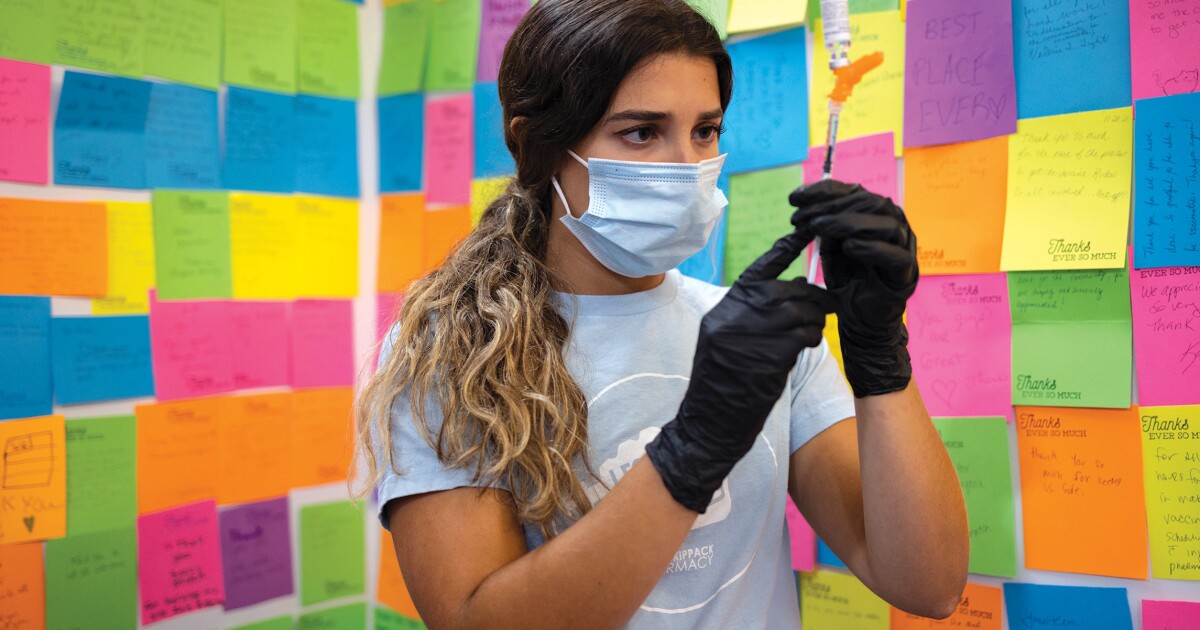

New COVID-19 booster shots from Pfizer and BioNTech have cleared all regulatory hurdles in time for the expected winter surge of the virus.
The new vaccine aims specifically to prevent further infection of omicron, which over the past 10 months has spread to become the dominant COVID-19 variant circulating around the world. Notably, the booster shot relies on mRNA technology, which researchers before the COVID-19 pandemic saw as a promising epidemiological tool. The mRNA technology, when working correctly, teaches human cells how to make a protein that will trigger an immune response inside a person’s body.
The Centers for Disease Control and Prevention recommends that those aged 12 and older get the new boosters. To receive the shot, a person must have completed primary vaccinations two months out from receiving the booster.
The agency credits the vaccines, first developed during the Trump administration and pushed widely by the Biden White House, as lifesaving innovations that are free of cost. According to the CDC, people who have had one or two boosters have a 0.024% chance of being hospitalized due to a COVID-19-related illness. For those under 50, the rate is even lower, at 0.014%.
Federal officials estimate that more than 200 million people are eligible for the new boost. According to Monica Gandhi, an infectious disease expert at the University of California, San Francisco, the booster shot is strongly encouraged for those who are immunocompromised or are 60 years of age and older.
However, the booster became available through an unprecedented regulatory bypass by healthcare officials. The vaccine received approval through the emergency use authorization, reflecting the Food and Drug Administration’s and the CDC’s frantic efforts to prevent the further spread of the virus and its variants. EUA approval allowed the vaccine providers to skip valued presentations of crucial statistical evidence through clinical trials.
The decision for EUA approval comes through high confidence that fresh clinical data are unnecessary. Pfizer and BioNTech have submitted preclinical data on the vaccine’s efficacy to the FDA, which is not publicly available. They expect to begin clinical trials next month.
A release from Pfizer announced that the data evaluating the two vaccine candidates’ safety, tolerability, and immunogenicity demonstrated positive results.
“Both vaccine candidates demonstrated a favorable safety and tolerability profile similar to the Pfizer-BioNTech COVID-19 Vaccine,” it said.
In a news conference, Dr. Peter Marks, the head of the FDA’s vaccine review office, said, “We don’t know for a fact yet whether we will get to that same level, but that is the goal here. And that is what we believe the evidence that we’ve seen helps point to.”
Still, some vaccination warning signs have emerged.
The director of Mayo Clinic’s Vaccine Research Group, Dr. Gregory Poland, developed “life-altering” tinnitus, a ringing in one or both ears, after his second shot. Poland has nevertheless continued to advocate vaccination.
Myocarditis, an inflammation of the heart, has also affected 1 in 1,800 vaccinated healthy males. As a result, in 2021, Swedish health officials announced they would pause the Moderna vaccination for some groups.





